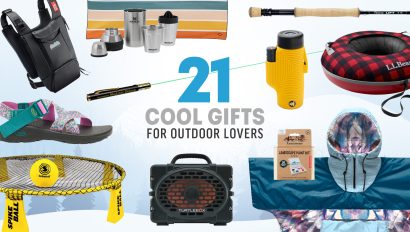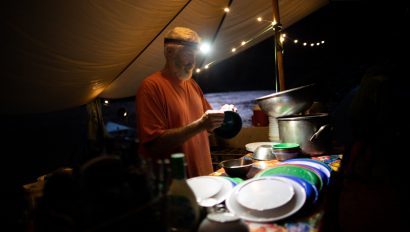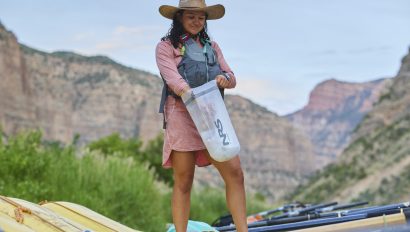
So, you’re buying a tent. Maybe it’s your first or maybe you’re upgrading. Regardless, the array of choices can be bewildering. But like most gear purchases, once you understand some basic concepts and think about how you plan to use your shelter, you can narrow your focus and have confidence in your purchase.
First, you’ll want to understand the most basic terms you’ll likely encounter when buying a tent:
Shelter — This is the broadest term used for the array of products available that will (hopefully) keep you protected from the elements on your outdoor adventure. This includes the most popular option, tents.
Fly — The fly is a waterproof cover for a tent. It can help keep you dry, trap warmth, and even prevent your tent from blowing away in the wind.
Vestibule — A weather-protected area between the fly and the tent that can be used for stowing gear under cover but outside of the tent itself.
Ground cloth — Any material that you put between your tent floor and the ground.
Single-layer — These tents are waterproof on their own and don’t require a fly. There is no (or very little) mesh for ventilation and the walls are engineered to keep you protected from rain and snow.
Double-layer — Double-layer shelters include a tent, often with mesh panels that are not waterproof, and a fly to make the shelter weather tight.
3-season — A 3-season tent is designed for use in spring, summer and fall and it’s lighter and less durable than a 4-season tent.
4-season — Four-season tents have flies that come all the way to the ground, solid poles, durable fabrics and lots of tie down options. They are heavy to carry and made to handle strong winds and snow.
Stakes — Stakes hold your shelter to the ground in the wind and help keep the tent and fly taut which in turn, prevents the tent from leaking.
Guy-lines — Guy-lines are lengths of rope that run from stakes in the ground, trees, or other fixed objects to the tent or fly and help the tent function the way it was engineered.
Free-standing vs. non-free-standing shelter
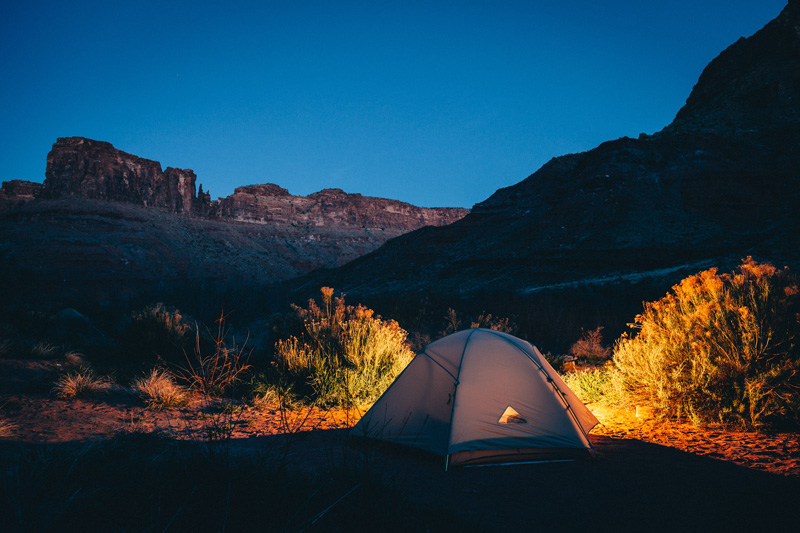
Free-standing shelters are what most people envision when they think of tents. They typically include poles, doors, a floor, and are engineered to stand on their own. Most free-standing tents include a fly and are therefore double-wall tents, but some are single-wall. Regardless, they come in numerous designs and generally, they are considered the most convenient, versatile type of tent you can buy.
Free-standing tents have many upsides. They’re relatively easy to set up. If you know the weather is going to be nice, you can leave the fly off the tent which can save weight on short backcountry trips. Alternatively, many free-standing tents can be pitched without the actual tent. By using the ground cloth, poles and fly, you can “fast-pitch” your tent to create a structure that keeps you protected from the elements (but not bugs!).
The main downside of free-standing tents is that they are heavier than most non-free-standing shelters. Additionally, in an effort to reduce weight, manufacturers often use lighter, more fragile materials, which can make them more delicate and susceptible to damage like holes and rips in the fabrics, broken zippers and snapped poles. They also need to be staked down so they don’t blow away in the wind.
Still, free-standing dome tents are typically the go-to choice for most recreational campers, backpackers and paddlers. Other free-standing designs like geodesic and tunnel tents work well for expedition-style trips in inclement weather. There are also some new technologies out there including pop-up and inflatable tents. Pop-up tents use flexible poles that are built into the tent design and automatically “pop-up” when unpacked. After you’re done, the tent is folded back into its bag – these are ideal for car camping, or music festivals. Inflatable tents, which are gaining in popularity, replace poles with inflatable sleeves and ensure you never suffer the hassle of leaving your tent poles at home.
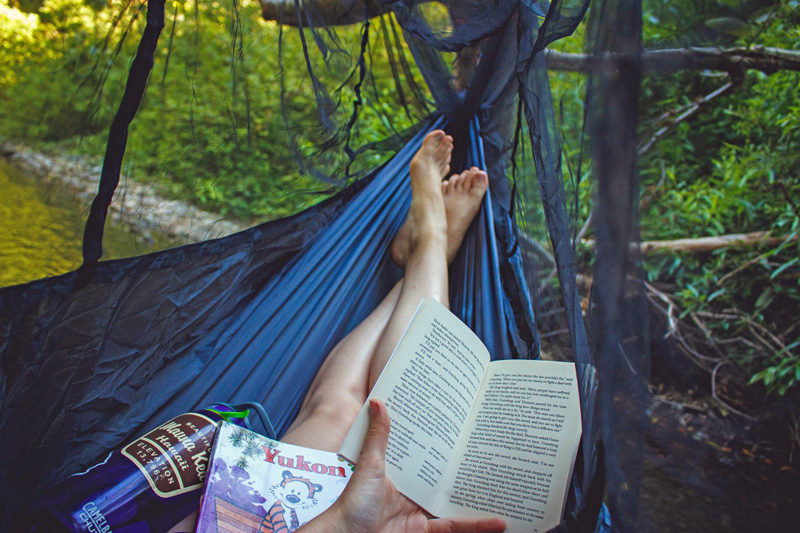
Non-free-standing shelters require some kind of on-site engineering to function. Think a traditional A-frame tarp-style shelter: a length of rope tied between two trees is draped by a tarp which is then staked to the ground to keep taut. These shelters may also use trekking poles (or a stick) tepee-style. Some new designs suspend a platform of durable fabric between multiple trees using webbing to create a tent/hammock hybrid.
The best thing about non-free-standing shelters is their simplicity. For backcountry enthusiasts who want a compact, light-weight, weather-resistant shelter that’s easy to carry, but don’t mind mixing it up with the bugs, these are a great option. Generally, they’re also less expensive than free-standing shelters.
Within these two categories exist dozens of sub-designs, shapes and technologies including options that don’t fit cleanly into this basic dichotomy such as roof top tents that mount on top of your car’s roof rack, or hammocks, which often have add-ons like mosquito nets and even rain-proof flies that can make them more effective in inclement weather.
Narrowing your search
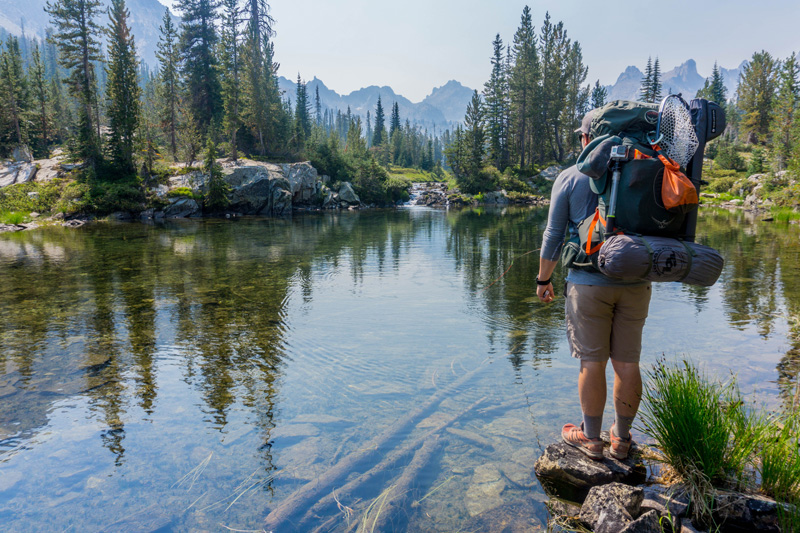
For most people, the biggest factors in choosing a tent are likely cost, size and weight. Of course, these are intertwined – as a general rule, tents engineered to be compact and light (think ultra-light, free-standing tents), or tents with a larger footprint, hence weight, cost more.
Generally, when buying a tent you’ll want to ask yourself:
1) Where do I plan to camp most of the time? Think backcountry vs. campground (weight), rainy vs. dry climate (single-wall or double), high-elevation vs. low (wind).
2) Who will I camp with most of the time? Will it often be just you or will your spouse/friend/kids/dog be joining you frequently? Do they have a fear of bugs or hate getting wet?
3) When will I camp most of the time? Are you a summer-only camper, like to sleep under the stars in shoulder season or plan to embrace winter camping?
4) How will I transport the tent for the most part? Are you a backpacker, bikepacker or thru-hiker looking to pinch pounds or are you mostly car camping or rafting where weight isn’t a big issue?
In short, focus on how you’re going to use the tent 80 percent of the time.
- If you often camp with your spouse and dog, then get a larger tent to accommodate you all. For example, if there are two of you, buy a 3-person tent. It’ll be a bit heavier on your solo trips, but you won’t have Rex sleeping on your head the rest of the time.
- Do you plan to use your tent primarily for backpacking or paddle trips? Then consider spending a bit more money on an ultra-lightweight and compact, double-layer tent that’s easy to pack into small places and also allows you to “fast-pitch” it during ideal weather conditions.
- For the fair-weather, car-camping family who goes out a couple times per summer, weight isn’t a concern, so a budget tent from Cabella’s or a good go-to like the REI Kingdom tent will work great. For added comfort, families may also want to opt for extra space, therefore a family of four might want to consider a 5- or even 6-person tent.
- If you camp in the rain-soaked Pacific Northwest, consider a high-quality double-layer, free-standing tent. It will be a bit heavier to haul, but it will keep you drier and therefore more comfortable and happier when it rains sideways for five days straight.
Once you evaluate your camping style, you can start narrowing down your search. Talk to your friends and read reviews of the different designs. Then pick a shelter that matches your priorities and your budget.
Avoid the temptation to buy a shelter designed for the most extreme type of adventure you envision. My first tent was a 4-person, 4-season monster that I bought with grand visions of lots of winter camping. I did go winter camping in it a few times. But mostly I lugged an unnecessarily big, heavy tent on a lot of summer backpacking trips.
Choose the best all-occasion tent
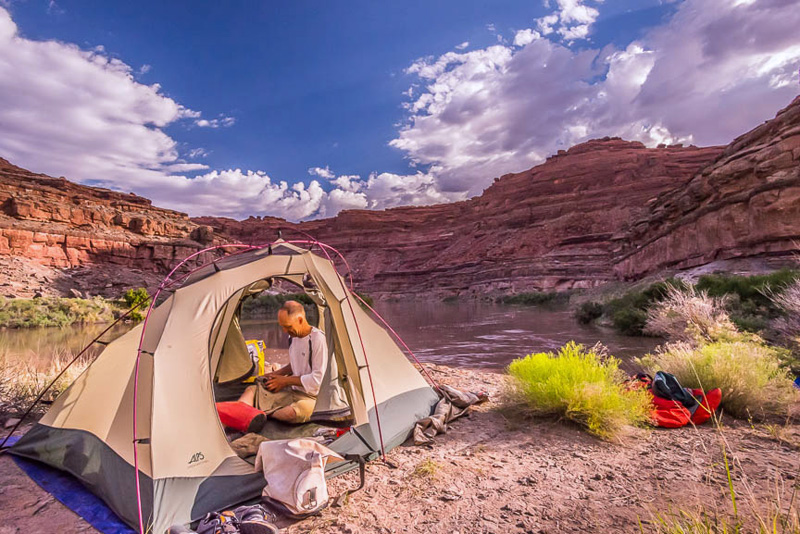
Personally, I tend to want to do it all—car camping, backpacking, self-supported SUP trips, but I don’t have a budget for a tent quiver. That’s why I use a free-standing, double-layer, 3-person, 3-season tent similar to this one. It provides the most versatility and fits my wife, myself and the dog. Because it’s free-standing, we can set it up on rock, sand, dirt and snow, making it usable everywhere from Moab to Maine. I chose a model with a fly that comes almost to the ground, so I can use it in the winter in a pinch. If I’m heading out solo, I’ll leave the tent body at home and “fast-pitch” with just the fly, a ground cloth and the poles. If I’m confident the weather is going to be nice, I’ll leave the whole thing at home and bring a small piece of Tyvek to sleep on.
Most folks will probably do well with a similar set up. The most important thing is to not let picking the right tent stress you out. Sure it’s one of the most important and expensive pieces of outdoor gear, but with the right approach, you’ll end up buying a tent that will provide years of camping enjoyment.
Photos from top: Patrick Hendry/Unsplash; Ben Duchac/Unsplash ; Katya Austin/Unsplash; Tyson Dudley/Unsplash; James Kaiser
*PLEASE NOTE THAT SOME OF THE LINKS ABOVE ARE AFFILIATE LINKS, AND OARS WILL EARN A SMALL COMMISSION IF YOU DECIDE TO MAKE A PURCHASE AFTER CLICKING THROUGH THE LINK.
Related Posts
Sign up for Our Newsletter

